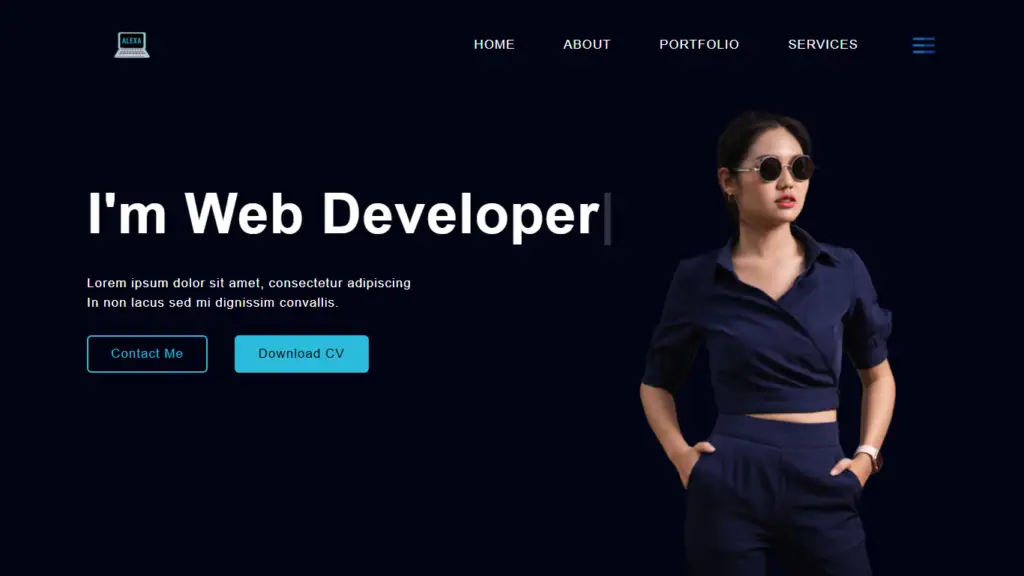Are you aspiring to become a frontend developer? Would you like to learn about the abilities and information needed to succeed in this area? This article will give you a complete guide to becoming a successful frontend developer. We will discuss the important skills, tools, and technologies that you must learn in order to do well in the fast-moving field of web development.
Understanding Frontend Development

Frontend development is about making and putting into action the part of a website or web app that users interact with. It includes writing code in different programming languages like HTML, CSS, and JavaScript to construct the visual and interactive parts that users can see and use. A frontend developer has the job of converting the design and features into an interface that is easy to use and looks good to the eye.
Essential Programming Languages

To embark on your journey as a frontend developer, it is crucial to have a strong foundation in programming languages. The following languages are essential for frontend development:
HTML: The Backbone of Web Development
HTML is the fundamental building block of web pages. It provides the structure and content for websites. Understanding HTML tags, elements, and semantic markup is vital for creating well-structured and accessible web pages.
CSS: Bringing Life to Web Design
CSS is used to style and enhance the visual appearance of web pages. It enables you to apply colors, layouts, and animations to HTML elements. Mastering CSS will allow you to create stunning and responsive designs.
JavaScript: The Language of Interactivity
JavaScript is a versatile programming language that adds interactivity and dynamic behavior to web pages. With JavaScript, you can create interactive forms, handle user events, and manipulate web page elements. It is a powerful tool in a frontend developer’s arsenal.
Frontend Frameworks and Libraries

Frontend frameworks and libraries provide developers with pre-built components and abstractions to simplify the development process. Some popular frameworks and libraries include:
Angular
Angular is a comprehensive JavaScript framework developed by Google. It enables you to build scalable and feature-rich web applications. With its powerful templating system and dependency injection, Angular simplifies frontend development.
React
React is a JavaScript library maintained by Facebook. It allows developers to build reusable UI components and create dynamic user interfaces. React’s virtual DOM (Document Object Model) efficiently updates and renders components, making it a popular choice among frontend developers.
Vue.js
Vue.js is a progressive JavaScript framework known for its simplicity and flexibility. It allows you to incrementally adopt its features, making it suitable for both small and large-scale projects. Vue.js emphasizes reactivity and component-based architecture.
Version Control Systems

Version control systems are essential for tracking and managing changes to your codebase. They allow you to collaborate with other developers, revert to previous versions, and maintain a clean and organized code repository. Some popular version control systems are Git and Mercurial.
Responsive Design and Mobile Development

In today’s mobile-driven world, it is crucial for frontend developers to create websites and web applications that are responsive and mobile-friendly. Responsive design ensures that your web content adapts and displays properly on different devices and screen sizes. Mobile development frameworks like React Native and Ionic can also be valuable for building native-like mobile apps using web technologies.
Testing and Debugging

Testing and debugging are essential steps in the frontend development process. Writing automated tests and using debugging tools help identify and fix issues in your code. Frameworks like Jest and tools like Chrome DevTools can assist in efficient testing and debugging.
Performance Optimization

Optimizing the performance of your frontend code is important for delivering fast and efficient web experiences. Techniques such as code minification, image optimization, caching, and lazy loading can significantly improve the performance of your website or application.
Web Accessibility

Web accessibility ensures that people with disabilities can access and navigate your web content. As a frontend developer, it is crucial to create websites that are accessible to all users. Understanding WCAG (Web Content Accessibility Guidelines) and implementing accessibility best practices will help you build inclusive web experiences.
Cross-Browser Compatibility

Frontend developers need to ensure that their websites and web applications work consistently across different web browsers. Testing your code on multiple browsers and using CSS prefixes and JavaScript polyfills can help achieve cross-browser compatibility.
Build Tools and Task Runners

Build tools and task runners automate repetitive tasks and streamline the development workflow. Tools like webpack, Gulp, and Grunt help with tasks such as bundling and minification, optimizing assets, and running tests. Familiarize yourself with these tools to enhance your frontend development process.
Web Performance Optimization

Web performance optimization is a crucial aspect of frontend development. It involves improving the speed and efficiency of your website or web application. Here are some key considerations for web performance optimization:
Minification and Compression
Minifying your CSS and JavaScript files by removing unnecessary characters and spaces can significantly reduce file sizes, resulting in faster loading times. Additionally, compressing your assets using techniques like GZIP compression can further optimize the delivery of resources.
Caching
Implementing caching strategies such as browser caching and server-side caching can reduce the number of requests made to the server and improve load times for returning visitors. Setting appropriate cache headers and utilizing techniques like CDN (Content Delivery Network) caching can boost performance.
Image Optimization
Optimizing images is essential for improving web performance. Compressing images without compromising visual quality, using appropriate file formats, and employing lazy loading techniques can reduce page load times significantly.
Code Splitting and Lazy Loading
Code splitting involves breaking your code into smaller, manageable chunks and loading them on demand, reducing the initial load time. Lazy loading defers the loading of non-critical resources until they are needed, further improving performance by reducing the initial page weight.
Performance Monitoring
Regularly monitoring your website’s performance using tools like Lighthouse, PageSpeed Insights, or WebPageTest can help identify areas for improvement. Analyzing metrics such as page load time, time to interactive, and other performance indicators can guide you in optimizing your frontend code.
Implementing these strategies and staying updated with best practices in web performance optimization will ensure that your websites and web applications deliver exceptional user experiences with fast load times.
Continuous Learning and Growth

Frontend development is a rapidly evolving field, and continuous learning is key to staying up to date with the latest trends and technologies. Engage in online communities, follow industry blogs, attend conferences, and explore new frameworks and tools to expand your skill set and grow as a frontend developer.
Conclusion

Becoming a frontend developer calls for a blend of technical abilities, creativity, and a constant thirst for knowledge. By following this straightforward guide, you will gain the necessary knowledge and tools to succeed in the constantly changing world of web development. Remember to stay curious, practice regularly, and embrace new technologies. Good luck on your journey to becoming a frontend developer!
FAQs
Click Here : To Show Your Support! 😍





